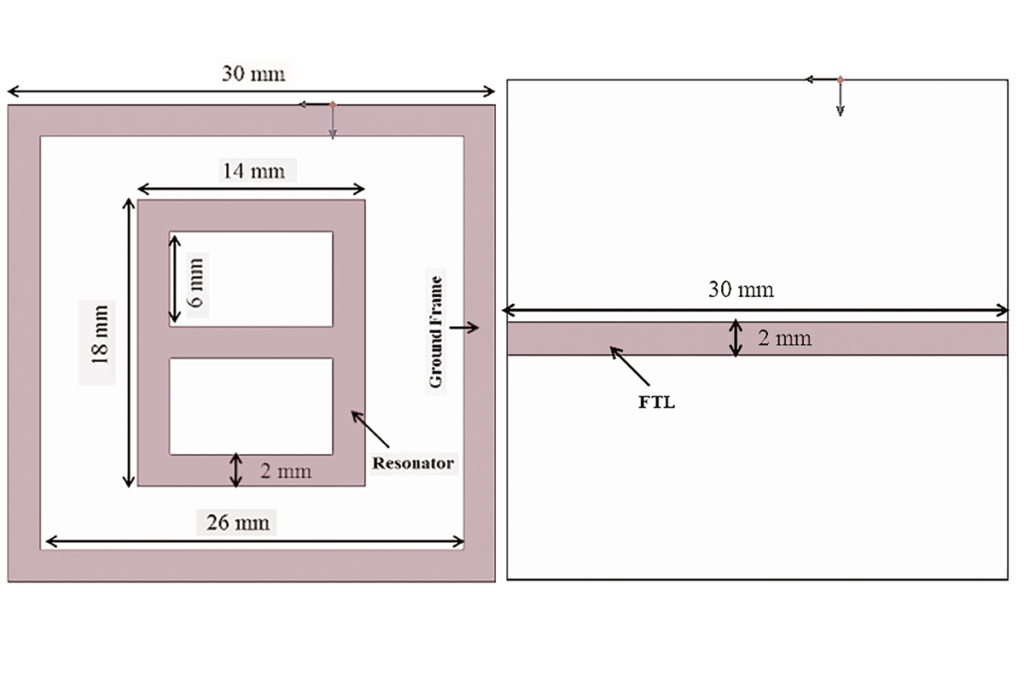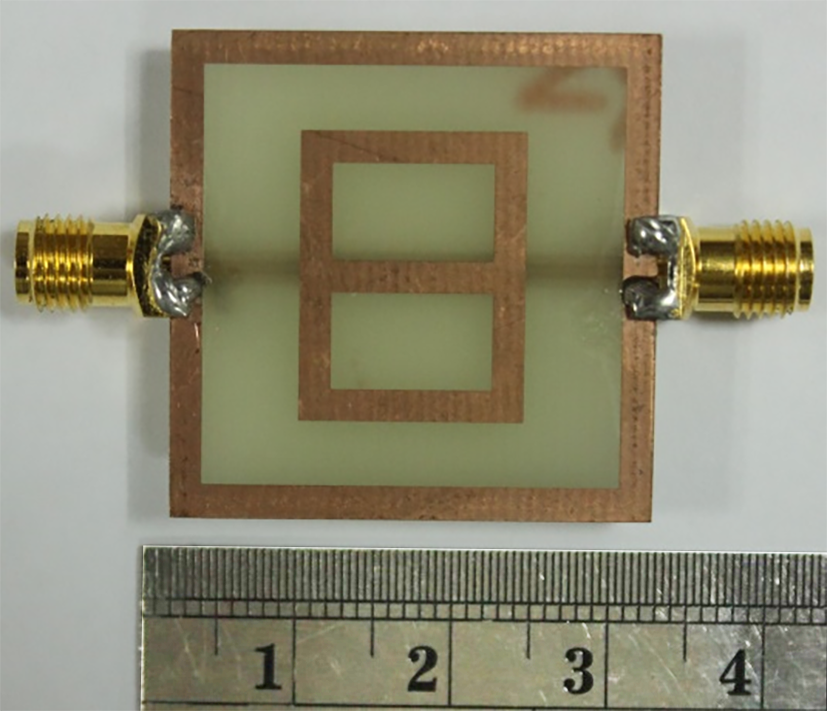By Md. Naimur Rahman and Mohammad Tariqul Islam, Universiti Kebangsaan Malaysia, and Md. Samsuzzaman, Patuakhali Science and Technology University, Bangladesh
Manmade composite materials with properties not usually found in nature, such as a negative refractive index for example, are called metamaterials. They were first introduced by Russian physicist Victor Veselago in 1968, but have since become a field of increased research, especially specific characteristics such as negative permeability and negative permittivity.
Over the years, researchers have suggested many resonator-based metamaterials for different operating frequencies. Such metamaterials find many applications, including in microwave imaging, terahertz sensing, sensor and absorber applications, and others. In this article, we propose a metamaterial based on a resonator shaped in the figure of eight (8), because of its simplicity and ease of fabrication. The proposed structure is based on microstrip technology, for use in sensor applications in the GHz operating band.
Design Analysis and Measurement
In our study, the resonator and a ground frame were used along with a feedback transmission line (FTL) to create the metamaterial. The structure was designed on a 1.6mm-thick low-cost FR4 dielectric substrate, with relative permittivity of 4.6 and loss tangent of 0.02.
The resonator and ground frame are etched on the same side of the substrate, with the FTL placed on the opposite; see Figure 1. The metamaterial structure is simulated and analysed with a High-Frequency Structural Simulator (HFSS); excitation to the resonator was supplied through the FTL. We built the metamaterial structure on a printed circuit board using the circuit plotter LPKF, S63; see Figure 2. For the measurements we used the N5227A PNA Microwave Network Analyser (10MHz- 67GHz).



Figure 3 shows this metamaterial’s reflection and transmission coefficients. The resonances are found at 3GHz and 6.5GHz, where reflections are minimal and transmissions maximal. In the measurement, the transmission resonance frequency is found at 6.0GHz. Although there’s little disagreement between the reflection and transmission coefficients of the simulated and measured results, they are uniform over the entire operating band. Disagreement between simulated and measured results occurs due to fabrication tolerances, soldering inaccuracies and external reflections.

Metamaterial Sensor Application
The proposed resonator-based metamaterial structure is used for a double-sided sensing system, where both sides (front and back) are used. The material to be detected is taken as an over-layer. By changing the thickness and dielectric constant of the unknown material, the frequency response of the metamaterial sensing device varies.
First, we changed the over-layer’s thickness. For the simulations we used an over-layer with dielectric constant of 4.4 and 0.025 loss tangent, since these parameters are very close to those of the FR4 substrate used in our metamaterial; see Figure 4a. The figure shows that the transmission resonance shifts downward with increased over-layer thickness.

The sensing device along with the over-layer can be considered as an RLC resonant circuit, where the resonance frequency is calculated by the effective capacitance and effective inductance. With increased thickness, the effective inductance and capacitance change, shifting the transmission resonance downward. Thus, the proposed metamaterial structure can be used effectively in sensing applications in the GHz region.
We also analysed the frequency response in reaction to varying the over-layer’s relative permittivity; see Figure 4b. We found that when the relative permittivity increases, the transmission resonance downshifts too. Higher over-layer permittivity corresponds to a larger downshift of the transmission resonance, increasing the metamaterial’s sensitivity.
To validate the simulation, we used the FR4 material with relative permittivity of 4.6 and 0.02 loss tangent and the Rogers RO4350 material with relative permittivity of 3.66 and 0.004 loss tangent. The respective materials’ thicknesses were 1.60mm and 1.53mm; see Figure 5.

In Figure 6, the resonance frequency shifts downward with the over-layers’ increasing thickness and relative permittivity. As the FR4 is thicker and with higher relative permittivity than the Rogers RO4350 material, FR4 shifts more downward than the Rogers RO4350 over-layer with reference to no over-layers, which is shown in Figure 3. More specifically, with no over-layer, the transmission resonance is at 6.0GHz, but using the Rogers RO4350 and FR4 over-layers, the transmission resonance shifts to 5.0GHz and 4.8GHz, respectively.

We also considered double over-layer structures, using FR4+FR4 and Rogers RO4350+Rogers RO4350 substrates; see Figure 7 for the simulated and measured frequency responses. From the figure, the resonance frequency shifts downward with increased over-layer thickness and relative permittivity. With no over-layer, the transmission resonance is at 6.0GHz, but using the Rogers RO4350+Rogers RO4350 and FR4+FR4 double over-layers, the transmission resonance shifts to 4.6GHz and 4.3GHz, respectively.

Based on simulations and measurements, it is confirmed that the proposed resonator-based metamaterial can detect materials with different thicknesses and relative permittivities, making it suitable as a sensor for detecting unknown materials.










